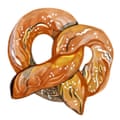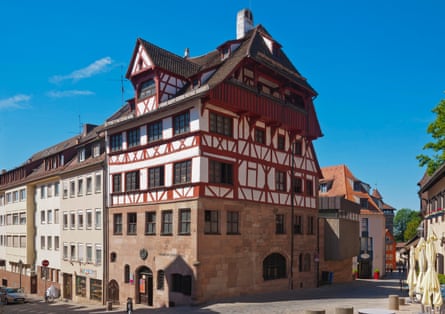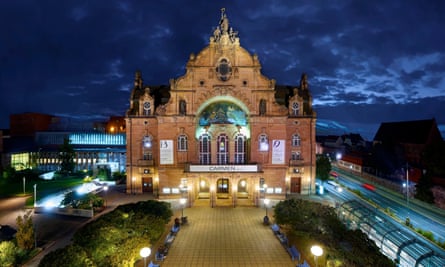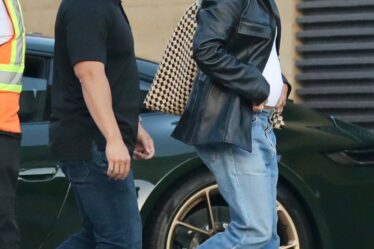
Food
You can’t leave Nuremberg without eating a Nürnberger. These sausages are just 7-9 centimetres long, tiny by German standards, and are the only sausages allowed to be called after the city. My favourites are from Bratwurst Häusle, by the rebuilt Renaissance City Hall, and are made fresh every day in the basement by the restaurant’s own butchers. Ask for drei im Weckla (three in a bun) to take away, or sit down and eat them with potato salad or sauerkraut. Never, ever add ketchup; do add horseradish.
Nuremberg is also the city of Lebkuchen (honey-sweetened cakes similar to gingerbread). The best are the flourless Elisenlebkuchen, made with hazelnuts and sold at small Lebküchnereien in the old town: try Düll, Fraunholz and Witte, and Neef, which also has the best cakes in town.
For eating on the go, food trucks on Market Square offer falafels, Korean bowls and pretzels. For local food in a traditional atmosphere, head to Hexenhäusle (for pork dish schäufele, goulash or goose leg with red cabbage); restaurants Steichele and Würzhaus serve traditional food at lunch and fine dining, with great wines, at night.
Inspiration

All Nuremberg’s main sights are close enough to each other to be walkable. The medieval Imperial Castle high above the city offers amazing views as well as fascinating history. The German National Museum explores Europe’s cultural heritage through 600,000 years of art and history, while the Neue Museum shows multimedia exhibits from the 1950s to the present.
The Renaissance Fembo House, the half-timbered former residence of artist Albrecht Dürer, and the Tucher Palace, home to the eponymous patrician family, both offer a glimpse of how Nurembergers lived centuries ago. Our Christkindlesmarkt is one of the oldest and most atmospheric Christmas markets in Germany, with traditional gifts, local delicacies and warming glasses of glühwein.
Neighbourhood
Near the centre, yet often overlooked by visitors, is the old Sankt Johannis district. In its cemetery are the graves of luminaries such as Dürer and Renaissance sculptor Veit Stoss. The baroque Hesperidengärten next door is the place for a peaceful stroll, but for something livelier, the Gostenhof district, known as GoHo, has galleries and street art, secondhand shops, cafes and bars. Fachmarie Glücksboutique sells handcrafted items, and Cafe Mainheim calls itself, with justification, the cosiest sitting room in town, and Palais Schaumburg is the pub of choice for the GoHo scene.
Green space

Pegnitzauen is a vast green space that covers both banks of the River Pegnitz. The best way to explore it is on a VAG Rad rented bike. East of the centre, it opens out into the Wöhrder See reservoir, with pedalos to hire in summer; the Strandgut cafe near the artificial beach is inviting in winter.
Nuremberg is surrounded by lush countryside. To the north, Knoblauchsland (Garlic Land) is one of the biggest market gardening areas in Germany. Cycling is a good way to enjoy its villages and food. A little further away, the Fränkische Schweiz (Franconian Switzerland) has incredible landscapes and peaks, plus microbreweries to enjoy.
Nightlife

After dark Nuremberg comes alive. There’s opera, concerts, ballets and plays at the Staatstheater – Tinto is a good place for a drink and a tapas afterwards. For live music, Club Stereo has local and international acts, and there’s a good selection of cocktails at Gelbes Haus. A walk through the alleyways of the old city will deliver you to the weekend party scene – try Die Rote Bar, Bar Biene and Mata Hari. Cloud One bar at Motel One, next to the railway station, has the best views over the city.
Stay
In the Mitte district, five minutes from the main square, hotel dasPaul has doubles from €116 room-only.
Claudia Radtke is a local guide who offers tours in English, German, Indonesian and Mandarin



